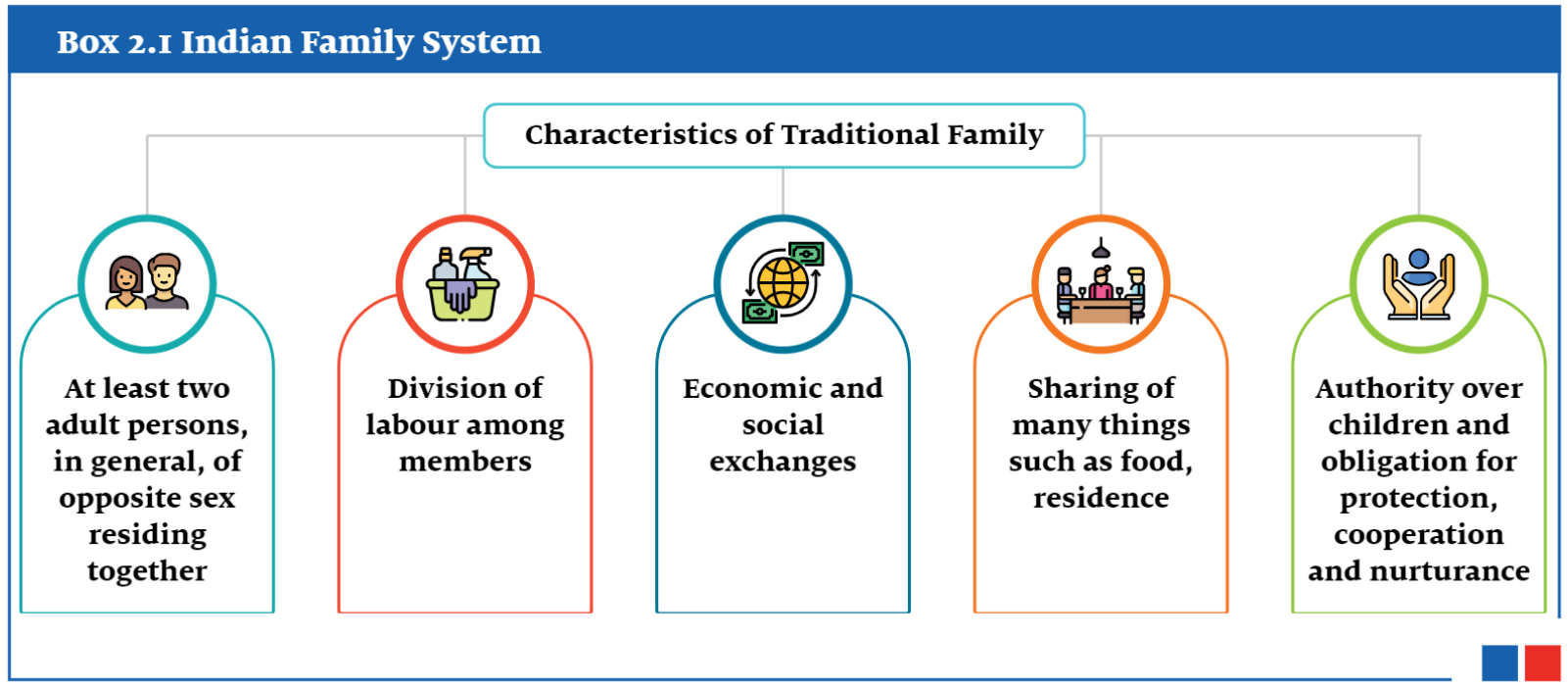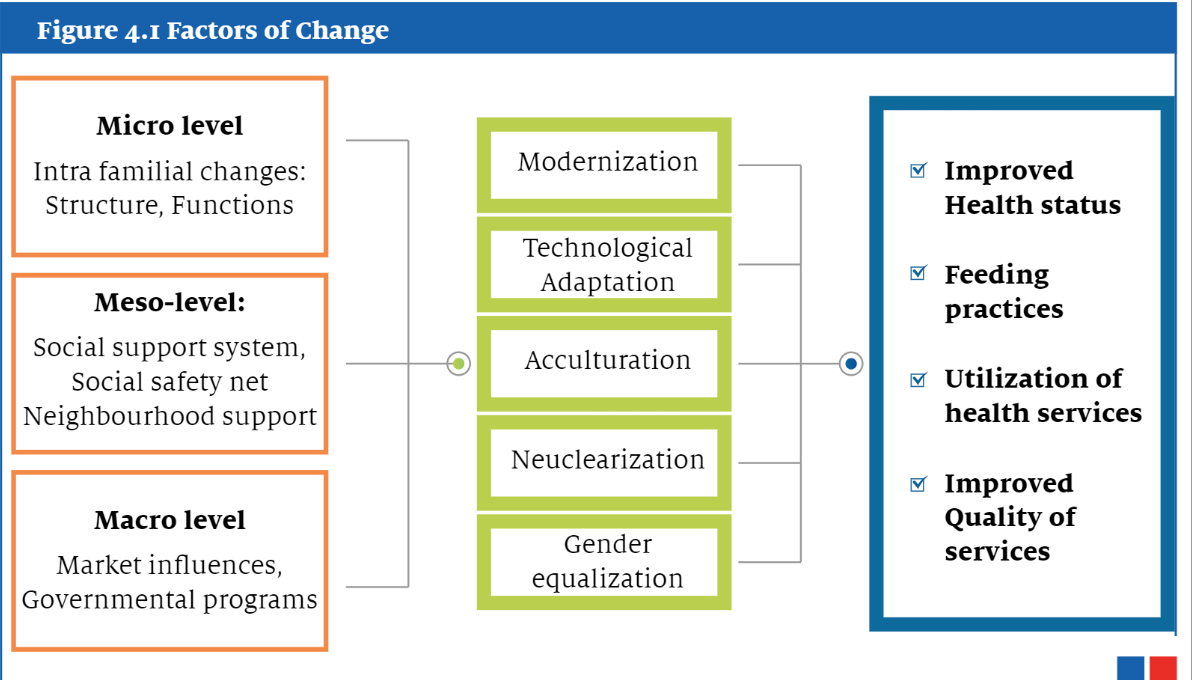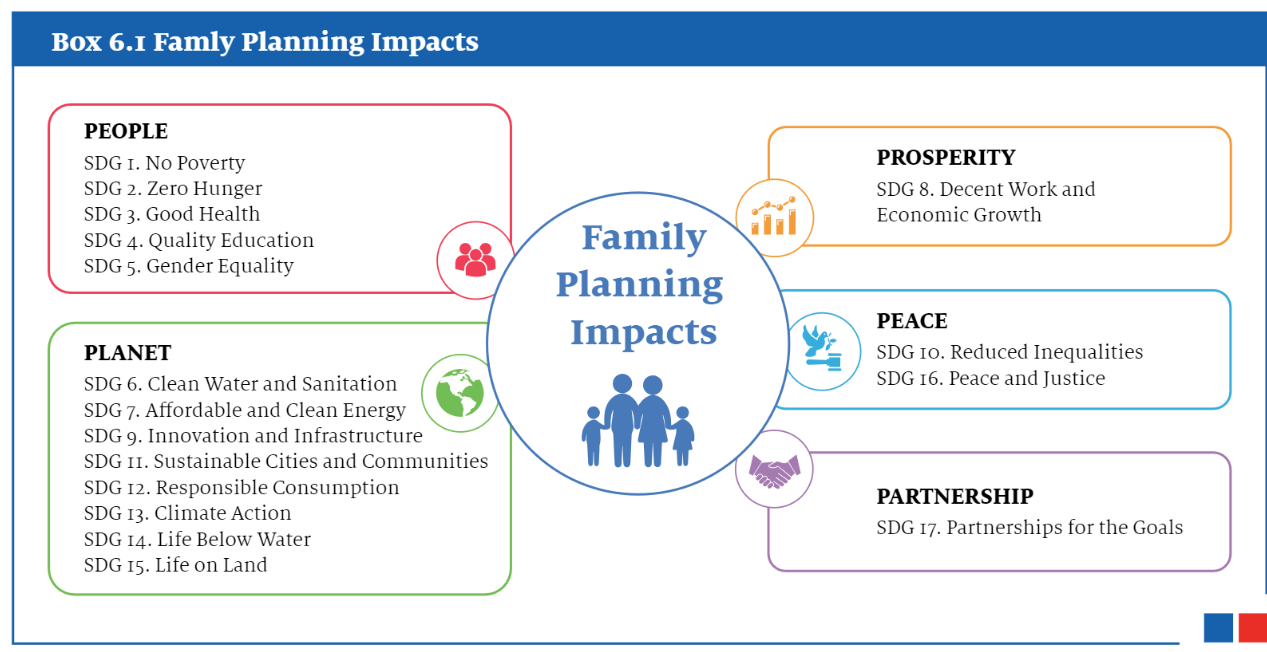Introduction
The family has been a foundational institution of society in most parts of the world, particularly in India. However, types of family vary in internal organisation, in its degree of autonomy and in sanctions and taboos by which it is protected and perpetuated. The dynamics of family structure in India have undergone significant transformations over the years, reflecting the intricate interplay between tradition, modernity, socio-economic factors, and cultural shifts. Such transformation is emblematic of the broader structural transformations occurring within Indian society, influenced by urbanization, globalization, educational attainment, changing gender roles, and advancements in technology.
What do we understand by family?
The term family is derived from the Latin word ‘familia’ denoting a household establishment and refers to a “group of individuals living together during important phases of their lifetime and bound to each other by biological and/or social and psychological relationship”.
Four Major Functions of a Family:
- Physical Function – carried out by providing a safe, comfortable environment necessary to growth, development and rest/recuperation.
- Economic Function – provide financial aid for members, as well as, meeting monetary needs of society.
- Reproductive Function – it is met by the birth of children.
- Socialization Function – Includes teaching; transmitting beliefs, values, attitudes and coping mechanisms; providing feedback and guiding problem – solving

What are different types of Family structures in India?
India follows the philosophy of Vasudhaiva Kutumbakam, with Kutumb or family acquiring primacy in interpersonal-social relationship dynamics. Unlike the western society, which puts impetus on “individualism”, this approach of Indian society is “collectivistic”. It promotes interdependence, social cohesion and co-operation, with the family forming the focal point of this social structure.
- Joint family: Historically, the traditional, ideal and desired family in India is the joint family which emphasizes on family integrity, family loyalty, and family unity.
- According to the Census of India (2011), the extended and joint family or households together claim merely 20% of all households.
- Nuclear Families: Many of the urban households are offshoots of rural extended or joint families.
- According to Census (2011), of all the households, nuclear family constituted 70%.
- Authority: Generally, in India, families adhere to a patriarchal ideology, follow the patrilineal (male descent) rule of descent, and are patrilocal (wife goes to the husband’s house post marriage).
- Usually, the eldest male member was the head of the house and administered joint property.
- However, in Kerala and some other communities, the headship rested with the eldest female member.
- Gender roles: Traditional families in India endorse traditional gender role preferences with women’s domain being limited to household work and child rearing while outside matters were handled by male members.
- Marriage system: Indian society has been highly endogamous and marriage within the same caste has been followed generally.
- Monogamy (state of being married to one person at a time) is the predominant form of marriage with some communities practicing polygamy (one husband with more than one wife) and some tribes practicing polygyny (One wife with more than one husband).
What are the changes that have occurred in family structure in India over the period?
Table 3.1. Changes that have occurred in family structure in India | ||
Parameters | Historical Family Structure in India | Changes in India’s Family Structure |
Family System |
|
|
Authority/ Household head |
|
|
Marriage norms |
|
|
Decision making and Conflicts |
|
|
Fertility and childcare |
|
|
Gender Roles |
|
|
Factors of Change - What are the factors affecting the family structure in India?
- Industrialization and Urbanization: Some impacts of industrialization and urbanization are listed below:
- Nuclearisation of the family as more and more members are moving away from larger family circle and living as individuals or members of a nuclear unit.
- Migration to industrial and urban areas in search of employment opportunities also increases joint living in some parts of urban areas.
- The states with a higher level of urbanization tend to have a higher proportion of single member households.
- Culture and Westernization: Culture has been shown to determine the family structure by delineating boundaries, rules for interaction, communication patterns, acceptable practices, discipline and hierarchy in the family. Impacts–
- Growth in individual families with focus on increased privacy and independence, ideals derived from western culture.
- Traditional authority of the eldest male in the Indian family system is diminishing with rising individualism and nuclearization.
- Increasing acceptance of non-traditional relationships such as homosexual relations and live-in arrangements.
- Socio-economic mobility: Increasing access to education and employment opportunities have restructured the family dynamics in more than one way.
- Gender roles are being redefined in the wake of increasing participation of women in labour force and thus decision making in the household.
- A high sense of individualism is growing among young people and they strive to improve their status in community outside the purview of family.
- Globalization: Globalization has resulted in movement of younger populations across the countries, especially from developing countries to developed countries. It also resulted in increased exchanges in goods, services, cultures and values.
- Penetration of consumerist culture has weakened the emotional bondage and many young members feel a sense of identity crisis in the family.
- Transfer of dependency burden of family from younger to older generations due to migration of prime working age members.
- Traditional decision-making responsibility of the male head of the family, in a patriarchal society started collapsing with foreign employment and improved economic status of women.
- Demographic transition: Its major consequence is the change in the age structure of the population with the proportion of adults increasing and the proportion of children and elderly falling.
- Whereas a lesser number of children contribute to resource-saving leading to better investments in socio-economic indicators, a growing number of elderly members might neutralize the higher saving propensity.
- These individual-level changes in turn affect family formation, behaviours, choices and inter-generational transfers of resources and emotional support.
- Technology: Technology has revolutionized the way families communicate.
- It enables instant connection regardless of geographical distances, contributing to connect with extended families.
- Disruption to traditional face-to-face interactions affects the depth and quality of personal conversations, which can increase conflicts within families.
- Technological apparatus is replacing the role of family as means of socializing and value inculcation in children.

What has been the impact of changing family structure on the marginalized?
5.1. Impact on women
- Increased Autonomy: The transition from traditional joint families to nuclear or non-traditional family structures has often resulted in greater autonomy and agency for women.
- However, women’s autonomy is differentiated by economic status, caste, region, religion etc. For instance, women in richer joint households have more autonomy in intra-household decision-making but less freedom of movement outside the home.
- Dual responsibility: With more women joining the workforce, nuclear families often rely on dual-income households, requiring women to juggle professional commitments with traditionally established household duties and caregiving responsibilities.
- This can lead to stress, fatigue, health issues and burnout feelings.
- Economic Opportunities: In changing nature of authority in families, women have better access to resources for pursuing higher education and skill development, leading to improved employment prospects and financial independence.
- Redefined Gender Roles: Women in nuclear families or non-traditional family arrangements often challenge traditional gender norms through their economic participation and role in decision making within the household.
- Household responsibilities are also being increasingly shared with their partners.
- Socialization: The decline of the joint family system has impacted women's support systems and social networks. Increasing number of non-traditional family arrangements, especially single-mother households, presents additional challenges in this regard.
- Burden of care: In nuclear families, women have to bear the primary responsibility of caregiving to both children and elderly. With ageing of Indian society and changing nature of families, this will continue to pose a significant challenge.
5.2. Impact on transgenders
- Increased Visibility: With changing family nature, visibility and acceptance of transgenders are increasing, especially in urban societies.
- However, the pace of their recognition and acceptance is slow compared to changes in family structure.
- Personal identity: In traditional Indian family setup, it is difficult for transgenders to reveal their true personal identity and they live under mental stress, anxiety and depression.
- Gender norms expectations: Transgenders face unique and complex issues as they confront cultural expectations of gender expression. Such gender norms expectations form part of most of the families and deviation is low.
- Social support: Difficult childhood in traditional families results in social isolation, low self-esteem and self-worth among transgenders. They then seek support from chosen families, LGBTQIA+ community organizations etc.
- Policy support: With recognition of transgender rights with the verdict of Supreme Court and Transgender Persons (Protection of Rights) Act, 2019, they can expect better access to resources, education and healthcare in Indian society.
5.3. Impact on Children
- Identity formation: In nuclear families, children often develop a strong sense of individual identity and autonomy, while in joint families, they develop a deeper connection to their extended family heritage and traditions.
- Social Support: In small households, children lack emotional and social support that comes from extended family relationships, impacting their well-being and social development.
- Single-parent households: Increasing separation and divorce rates result in single-parent household which impacts the welfare of the child.
- Cultural identity: Children often lose connection with their cultural heritage in modern family systems.
Box 4.2. What has been the impact of Covid on the family structure of India? A growing body of research demonstrates that COVID-19 has had a profound impact on family functioning and well-being in a range of countries. Wider impacts of Covid-19 can be seen from the following:
|
Role of governance systems in shaping family structure in India
- Legislations and policies: Various laws and policies have impacted family structure in myriad ways.
- Demographic changes: Fertility and mortality decline in India is majorly policy-induced (health and family planning policies).
- Economic opportunities: Labour laws passed for benefit of employees like the Indian Workmen Compensation Act (1923), the Minimum Wages Act 1948, helped to reduce the economic reliance of members on the joint family for economic support.
- Changes in marriages: Abolition of child marriages and prescribed the minimum age of marriage for both boys and girls with provisions for widow remarriages.
- Family inheritance: Hindu Succession Act 1956 gave a daughter and a son equal rights to the father’s property.
- Social welfare programs: The government's social welfare programs, including those aimed at poverty alleviation, healthcare, and education, have had an impact on family structure.
- Improved access to education and healthcare led to smaller family sizes as families prioritize quality of life over quantity of children.
- Social Security programs provides means for care of elderly thus making smaller households a viable unit for social functioning.
- Urbanization and industrialization: Policies are major driving force behind urbanization and industrialization, which further led to significant shifts in family structure.
- Resultant migration and economic opportunities result in smaller family sizes, increased participation of women in workforce and shift away from traditional authority.
- Gender Equality: Efforts to promote gender equality through legal reforms, such as laws against dowry, domestic violence, and child marriage, have challenged traditional patriarchal norms and empowered women to make independent choices regarding marriage, family, and career.

Way Forward
- Promoting Gender Equality: Efforts towards promoting gender equality and redefining gender roles should continue through required policy and legal support.
- This includes effective enforcement of laws against dowry, domestic violence, and child marriage and laws promoting economic participation of women.
- Supporting Marginalized Groups: Promote inclusion and well-being of marginalized sections including transgenders through targeted social welfare programs, access to education, healthcare and community support networks.
- Effective family planning: Family planning programmes should include resources and assistance for caregiving responsibilities, creche facilities for working women and promoting counselling for resolving familial conflicts.
- Addressing socio-economic disparities: These may include policies to reduce income inequality, improving access to basic amenities and create opportunities to every section of society.
- Elderly Care: Special attention needs to be brought about the aspects of care related to the elderly population. Key stakeholders like families, government and civil society must come forward to create a robust mechanism for their care.
- Responsible use of Technology: It is essential to use technology responsibly and maintain a balance between online and offline interactions.
- Educating families about the potential risks of excessive technology use and promoting healthy screen time habits can help mitigate negative impacts.
- Cultural Education: Government/education bodies/civil society can run campaigns for disseminating knowledge about Indian cultural heritage so that children and families can connect with their heritage.
Conclusion
From the traditional joint family system to the increasing prevalence of nuclear and non-traditional family arrangements, the landscape of Indian families has undergone significant transformations over the years. These changes have been driven by industrialization, urbanization, globalization, evolving governance framework among other factors. As families adapt to these changes, they face both opportunities and challenges. By fostering open communication, setting boundaries, and prioritizing quality time together, families can navigate these changes and opportunities while maintaining strong connections and support networks.
The strength of a Nation is derived from the integrity of its homes. - Confucius |
- Tags :
- Society





